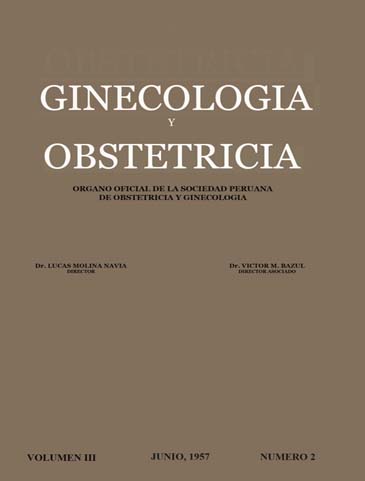The natural history of cervical cancer and its behavior from the point of view anatomicopathological
DOI:
https://doi.org/10.31403/rpgo.v3i1136Abstract
We have studied the pathways and metastases in 56 autopsies of patients who died from cervical cancer. The extension by continuity is the most common mode of transmission of this neoplasm. Parametria were invaded in 96.4 percent of cases; then follow in order of frequency, the vesico-vaginal septum (69.7 percent), the vagina and the bladder (59 percent), the rectovaginal septum (53 percent), rectum (34 percent), uterine body and annexes (23 percent). Metastasis via the lymphatic system were found in 83.9 percent of patients, being more frequent metastases in pelvic lymph and then in descending order, metastasis was found in lymph lumbar retro-peritoneal (50 percent), mesenteric and mediastinal (18 and 16 percent respectively) and supraclavicular (5.3 percent). .5 In 42 percent of cases caused by blood metastasis was found, with the lungs (20 percent) and liver (16 percent) the most frequently involved organs. In 18 percent of the sick in which hematogenous metastases was found not extrapelvianos lymph node metastasis was found, The most frequent causes of death were: uremia (42.5 percent) and carcinomatosis (34 percent). In 45 cases (80 percent) compression ureteral found in 39 of them bilateral. As a result in 38 patients (68 percent) hydronephrosis was found; in 29 (52 percent) and bilateral hydronephrosis was 2 sided. In 16 cases (28.5 percent) cervical cancer was located in the pelvis and death determined exclusively urinary complications. It is very likely that sick that constitute this group could have benefited with a pelvic evisceration. That said, in other words, 28.5 percent of the cases seem to indicate that, theoretically, a sick four advanced cervical cancer could benefit from the super-radical surgical treatment.Downloads
Download data is not yet available.
Downloads
Published
2015-06-29
How to Cite
Campos Rey de Castro, J., & Gonzáles del Riego, M. (2015). The natural history of cervical cancer and its behavior from the point of view anatomicopathological. The Peruvian Journal of Gynecology and Obstetrics, 3(2), 65–80. https://doi.org/10.31403/rpgo.v3i1136
Issue
Section
Artículos Originales
















